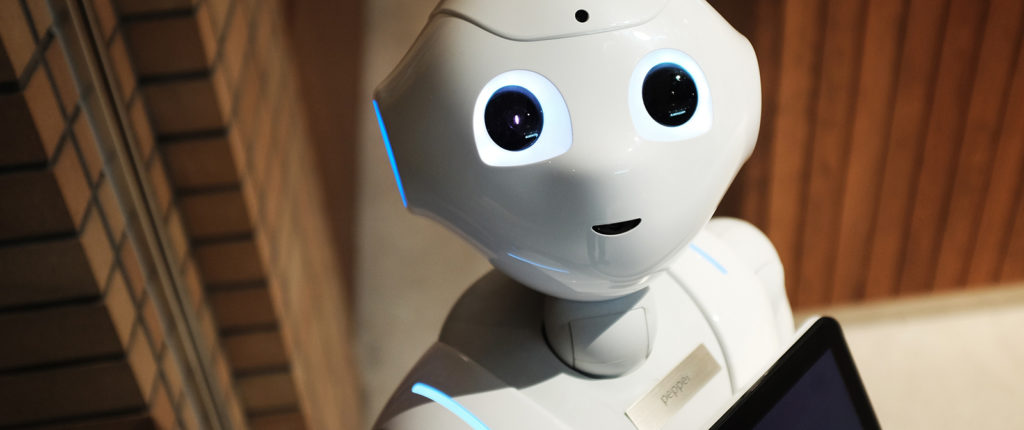
If you’re in marketing, you’ve probably already read a thing or two about the Silicon Valley’s latest obsession: chatbots. Email has dominated ROI in digital marketing campaigns for the last decade — at the end of the day, you can’t beat the price free impressions. The best part is, since mailing lists are based on opt-ins, you already know the people that sign up are highly engaged.
For the most part, content is free to create — how frequently you send out email blasts and which types of content you create depend on how much time you choose to invest.
While email campaigns have been the standard in terms of ROI for years, any email marketer knows an open rate of ~25% and a CTR (clickthrough rate) of ~5% is something to be proud of. Just to be clear, that means three-quarters of your audience isn’t even interested enough to click.
Compare that to Facebook Messenger chatbots which tend to see open rates as high as 88% and you start to get the picture.
Chatbots Aren’t Designed to Kill Email Marketing
Chatbots aren’t supposed to replace email marketing campaigns (yet). They’re completely different. Chatbots are interactive — much more like a conversation than a speech — so for now, email is still better for long-form content.
While things like notifications, shipping confirmations, and even purchasing experiences are all better over chatbot, delivering large amounts of texts in a small chat window can be difficult.
That being said, if your target audience is under 45, it’s probably time to start thinking about reformatting the way you send out content. Like most things, it’s impossible to know definitively which platform is better for your business without trying both and measuring the response.
All of the Cool Kids Are Using Messenger these Days
Right now, 13-24 is the largest age group for messaging apps, followed by 25-44, and finally, 45+. Email app usage tends to increase with age, while younger audiences appear to be more accepting of the chatbot revolution.
Emails still cater better to older audiences that are more accustomed to traditional, web-based desktop experiences. With messaging apps have a very low adoption rate among older audiences, focusing on high-quality mailing campaigns that they’re already used to may be a better option.
That being said, chatbots are the way of the future in any other scenario.
The best approach for any content marketing campaign is to reach your audience where they’re already engaged, using a platform they’re already familiar with. For younger audiences, this means messaging apps.
If you’re looking to reach millennials and beyond, chatbots are unbeatable in terms of usability and overall customer engagement.
How Chatbots Compare to Mailing Lists
The Similarities
Both chatbots and mailing campaigns require users to opt-in before they can get notifications or see any materials from your campaign. Similar to signing up for a mailing list by entering your email, Facebook Messenger requires users to follow the page’s bot before they can receive any messages.
Users can unsubscribe from both at any time, and Messenger takes it a step further by allowing users to stop the conversation by deleting it.
Chatbots and mailing lists both rely heavily on clear CTAs, albeit in a completely different form. The goal of either of these opt-in based marketing channels is to get people to interact with your brand.
With an email campaign, you’re putting links in content and hoping users head to outbound destinations. Chatbots also use CTAs but have the advantage of allowing users to respond directly to the conversation itself, without having to navigate away from the page they’re on. In the fast-paced world millennials are used to, this results in significantly better open rates and higher overall engagement.
The Differences
We all have that one email subscription that just doesn’t stop bothering us — regardless of how many times you click unsubscribe.
Just because mailing lists are based on opt-ins doesn’t necessarily mean those people intended to sign up. One of the main reasons mailing lists have incredibly low CTRs and open rates is because people signed up unintentionally — either when making a purchase, registering for an account, or starting a trial.
On the other hand, Facebook Messenger has strict parameters regarding how bots can connect with users. People can only be contacted by a bot after clicking follow, sending the bot a message, or posting/commenting on the page associated with the bot.
Chatbot messages feel more personal, and they aren’t perceived as a commercial distraction. When crafting conversational content, variety is your friend. If you want to get amazing engagement, you can’t come off as spammy — be unexpected, and make your content feel personal.
It’s important to remember that chatbots are actually interactive — they shouldn’t be used to inundate customers with a monologue from your business.
Smartphones allow us to operate at light speed. As the world around us continues to speed up, our attention spans decrease. Users want quick, to-the-point interactions. Chatbots allow you to market your brand by providing something that’s actually useful to your customers.
How to Quadruple Your Engagement by Using a Chatbot
Only send out your best content. Messages are way more personal than emails. You’re likely going to cause the recipient to stop what they’re doing, so it’s important to make sure your content is worthy of an interruption.
Chatbots aren’t just another tool to broadcast content — they’re about changing the way people interact with your brand. Conversational UIs (user interfaces) enable businesses to streamline the customer experience in a new way.
If you’re not useful, your recipients are simply going to type “unsubscribe.”
You’re not trying to design a single message or a piece of content, you’re trying to design a natural conversation — a dialogue. Use chatbots to reimagine the way you notify and interact with your customers.
